ASLA Professional Awards
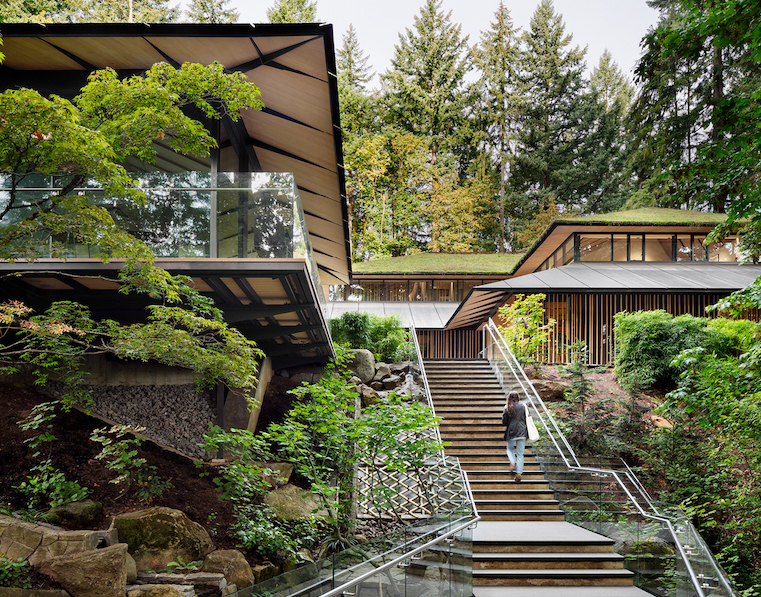
Chosen from 567 submissions, this year’s 31 Professional Award winners for the American Society of Landscape Architects (ASLA) represent the best of landscape architecture in the General Design, Urban Design, Residential Design, Analysis and Planning, Communications, and Research categories. In addition, a single Landmark Award is presented each year.
General Design Category: Award of Excellence
Cultural Crossing: Portland Japanese Garden
Portland, Oregon, United States
Walker Macy
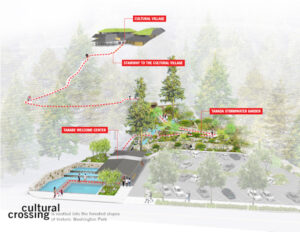
In the General Design category, the Award of Excellence went to Walker Macy for the Cultural Crossing project at the Portland Japanese Garden, Portland, Ore. The Cultural Crossing project is a place of inspired intercultural exchange and dynamic hands-on learning. While the project is an expansion of the existing Portland Japanese Garden, already a celebrated landmark known as one of the most authentic Japanese gardens outside of Japan, it diverges significantly from traditional Japanese garden design. Cultural Crossing creates a setting in which ecological principles and high-performance sustainable techniques blend with the aesthetics of modern Japanese design, and become the backdrop for a socially dynamic, world-class educational program. The elegant, contemporary spaces of the Cultural Crossing also restored the impacted, geologically complex landscapes of the site, and transformed the space into an immersive and interactive environment to learn about Japanese culture and craft.
Residential Design Category: Award of Excellence
Marshcourt
Cambridge, Massachusetts, United States
Reed Hilderbrand LLC Landscape Architecture
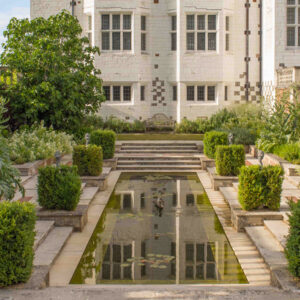
Marshcourt is the estate and gardens created by Edwin Lutyens with Gertrude Jekyll in the chalk-veined hills above the River Test in Hampshire, United Kingdom. Constructed between 1901 and 1904, both house and gardens are listed on the National Register of Historic Parks and Gardens — Marshcourt is a quintessential expression of the Arts and Crafts Movement. Lutyens and Jekyll’s design seized particular site conditions in ways bold and subtle to produce an evocative, inventive genius loci. In spring of 2010, the owners of Marshcourt commissioned our practice to develop a master plan for Marshcourt, which, after decades under different owners, lay in decline. The owners charged us to preserve the landscape while also adapting it to serve as a home for their family. Together we faced the formidable task of stewarding this national treasure into a new era as a contemporary home. This project required different landscape architecture approaches in different places: preservation, renewal or reinterpretation, and, elsewhere, entirely new design that sought, as Lutyens and Jekyll did, to articulate Marshcourt’s extraordinary genius loci.
Urban Design Category: Award of Excellence
Dilworth Park
Philadelphia, Pennsylvania, United States
OLIN
Client: Center City District
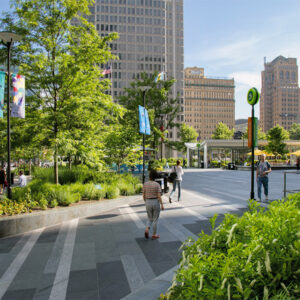
Dilworth Park at Philadelphia’s City Hall is a lively and contemporary embodiment of William Penn’s vision for Philadelphia as a ‘Green Country Town.’ Today the park is an inclusive hub of Philadelphia’s life outdoors but for decades this was not the case. Prior to renovation Dilworth was an uninviting and inaccessible maze of raised and sunken terraces, hidden passageways, and defunct fountains surrounded by gloomy malnourished trees. The opportunity for change raised the park, both physically and metaphorically, to the prominence of its location at the foot of Philadelphia’s City Hall. The new park provides universal accessibility by bringing the entire site to street level, and encourages use throughout the day with a variety of programming. The entire park, with its generous lawn, interactive fountain, café, and ample seating amidst green groves of native plantings, are all built atop the nexus of Philadelphia’s multi-modal transit system and acts as a connective gateway to all of Philly’s neighborhoods. The park functions as a 2.5-acre green roof, creating a welcome all-season spot for relaxation and public recreation.
Analysis and Planning Category: Award of Excellence
Rwanda Institute for Conservation Agriculture (RICA)
Bugesera, Rwanda, Africa
MASS Design Group
Client: Howard G. Buffett Foundation
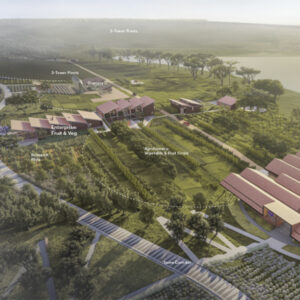
Rwanda’s population will double by 2050, increasing strain on the nation’s maxed-out farmlands. The Rwanda Institute for Conservation Agriculture (RICA) will help ensure future food security for all Rwandans by educating the next generation of farmers and agricultural leaders in developing healthy, sustainable food systems. Informed by a multidisciplinary research and analysis process, the landscape team generated a 1400 hectare land use and master plan guided by the unique theory of One Health, an understanding that human, ecological, and animal health are deeply intertwined. Through One Health RICA harnesses symbiotic ecological and agricultural relationships and regenerative principles to achieve greater crop yields, increased biodiversity, utilized waste streams, healthier soils, and cleaner water. RICA’s landscape architects orchestrated a master plan that will produce a net-zero carbon footprint through landscape design, sustainable construction methods, and materials, such as stone, soil, and vegetation, sourced directly from the site. The project will be petrochemical-free and energy-independent, drawing power from renewable, off-grid energy. RICA is estimated to become carbon-positive by 2044, positioning the project as a model for sustainable development.
Communications Category: Award of Excellence
The Seed Bank: A New Approach to the Living Wall
Sacramento, California, United States
Miridae
Client: DPR Construction
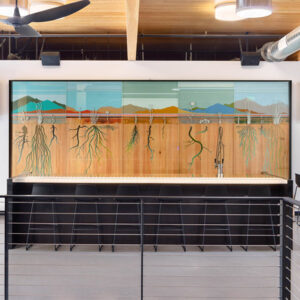
Our project began with a call for a “living wall” from a prominent national construction company moving their regional headquarters to Downtown Sacramento. They wanted a living wall that was sustainable, provided a sense of location, and required little maintenance. We wanted to create something that motivated the company to use habitat-crucial native plants in their construction projects and that would highlight the beauty and the benefits of these often-overlooked species. Thus, we decided to pursue a different concept for this living wall, one we have titled, the Seed Bank. Challenging the design standard that highlights the leaves, stems, and flowers we typically associate with plants, the Seed Bank uses dormant, live seeds of important California native species to highlight the unseen elements of these plants and to organize them in a spatially-explicit way that ties the local species to their natural and potential distributions.
The Landmark Award
Millennium Park—The Fortuitous Masterpiece
Chicago, Illinois, United States
Millennium Park Foundation
Client: City of Chicago
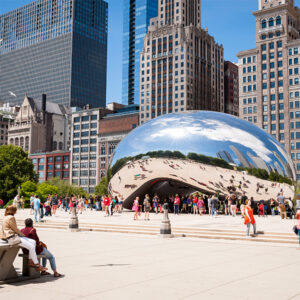
Few public space projects in the past 100 years have had a stronger impact on our ideas of how art, landscape architecture, and architecture can stimulate change in a City’s economy, change perceptions of collaboration throughout multiple professional fields, and change people’s lives than Millennium Park. The Park began life as a disused railyard in the central business district of Chicago and, thanks to one of the longest and most productive public-private partnerships in the country, has evolved as the cultural heart of the City. The Park welcomes over 20,000,000 annual visitors to its over 200 year-round free public cultural events featuring some of Chicago’s, and the world’s, best musicians, artists, architects, performers, and designers. The driving philosophy of Millennium Park has always been of a free, public, and equitably representative cultural space. This concept, and the Park’s design and operation, have inspired countless other cities and countries to study the Park for ideas about developing their own urban spaces, growing their own tourism economies, and creating a cultural heart for their own citizens.
A full list of this year’s Professional Award winners can be found at www.asla.org/2020awards


